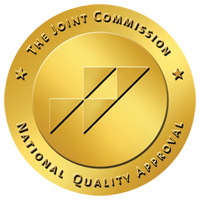
Alcohol Use Disorder (AUD), a condition often shadowed by stigma and misunderstanding, is more common than many realize. It affects millions of lives, reaching into the homes of individuals in Utah and beyond. This blog aims to shed light on AUD, exploring its symptoms, the process of diagnosis, and the journey towards recovery through effective treatment strategies.
Recognizing the Symptoms of Alcohol Use Disorder: The First Step
Alcohol Use Disorder (AUD) is a medical condition characterized by an impaired ability to stop or control alcohol use despite its negative repercussions. Recognizing its symptoms is often the first step towards seeking help and beginning the path to recovery. Here, we delve into some of the common signs associated with AUD:
Increased Tolerance: Over time, individuals with AUD may need to consume more alcohol to achieve the same effect. This increasing tolerance is often an early sign of alcohol dependence.
Neglecting Responsibilities: AUD can lead to individuals neglecting their personal and professional responsibilities. This might include poor performance at work or school, or neglecting home duties and care for children or pets.
Loss of Control over Drinking: Individuals may find they're drinking more or for longer periods than intended. They may want to cut down or stop drinking, but unsuccessful attempts can be a major red flag for AUD.
Withdrawal Symptoms: Experiencing withdrawal symptoms when trying to quit or reduce alcohol intake is a common symptom. These can include shaky hands, nausea, sweating, or even hallucinations in severe cases.
Continued Use Despite Negative Consequences: Persisting with alcohol use even when it leads to physical, psychological, or social problems is a key indicator of AUD.
Physical Health Issues: Chronic alcohol use can lead to a host of physical health problems such as liver disease, heart disease, sleep disorders, and more.
Mental Health Problems: Depression, anxiety, and other mental health issues are often associated with AUD.
Someone displaying any combination of these symptoms may be struggling with AUD. Recognizing these signs is the first crucial step towards seeking assistance and embarking on the path to recovery. It's important to remember that AUD is a medical disorder, not a moral failing, and professional help is available to guide you or your loved one towards a healthier future.
Diagnosis: The Critical Crossroads in the Journey to Recovery
The diagnosis of Alcohol Use Disorder (AUD) represents a pivotal moment in an individual's journey towards recovery. It’s the point where recognition of symptoms transitions into a formal understanding of the condition and the start of a targeted treatment process.
The diagnosis of AUD is a comprehensive and multifaceted process that requires a careful and holistic evaluation of symptoms, behaviors, and the impact of these factors on the individual's life.
Initial Screening: The first step in diagnosing AUD often involves a screening, which various healthcare professionals can conduct. This screening usually includes a series of questions about drinking habits, frequency, and the effects of alcohol use.
Assessment of Symptoms: Post-screening, if a healthcare provider suspects AUD, a more comprehensive assessment is carried out. This includes a detailed examination of the individual's symptoms. This could involve investigations into physical health complications from alcohol use, or psychological symptoms such as increased anxiety or experiences of withdrawal symptoms.
Diagnostic Criteria: Healthcare providers use specialized diagnostic criteria to identify AUD, most commonly the Diagnostic and Statistical Manual of Mental Disorders (DSM-5) developed by the American Psychiatric Association. These criteria look at a range of factors including the inability to control drinking, neglect of responsibilities, and withdrawal symptoms.
Determining Severity: Once AUD is identified, the severity of the disorder is determined, often categorized as mild, moderate, or severe. This classification helps in crafting the most appropriate treatment plan.
Co-occurring Disorders: During the diagnostic process, healthcare providers will also evaluate the individual for co-occurring mental health disorders, which can often accompany AUD. These could include conditions such as anxiety, depression, or bipolar disorder.
Impact Assessment: An important aspect of the diagnosis is understanding the impact of AUD on the person's life. This could involve exploring the consequences of alcohol use on relationships, work or education performance, and overall quality of life.
Arriving at a diagnosis of AUD is indeed a critical crossroad. It paves the way for individuals and their families to understand the condition and its implications fully, and more importantly, it opens up avenues for professional help and starts the journey towards recovery.
Inpatient Alcohol Rehab: The Beacon of Hope
Inpatient Alcohol Rehab is often a beacon of hope for individuals diagnosed with Alcohol Use Disorder (AUD). It's an intensive, structured treatment option that provides patients with round-the-clock medical care and support.
Comprehensive Care: Inpatient alcohol rehab centers offer comprehensive care that addresses both the physical and psychological aspects of AUD. This typically involves a team of healthcare professionals, including doctors, nurses, therapists, and counselors, working in concert to provide the best possible care.
Detoxification: The first step of inpatient rehab often involves medical detoxification. This process helps to cleanse the body of alcohol and manage withdrawal symptoms that may occur. The detox phase is closely monitored by medical professionals to ensure the patient’s safety.
Therapy and Counseling: Following detox, therapy and counseling become integral parts of the treatment plan. These may include individual therapy sessions, group therapy sessions, and family counseling. These therapeutic interventions aim to address the root causes of addiction and equip individuals with coping mechanisms and strategies for maintaining sobriety.
Structured Environment: Inpatient rehab provides a structured, distraction-free environment which is conducive for recovery. By removing the individual from the environment where substance use may be encouraged, inpatient rehab centers help to reduce the risk of relapse during the initial recovery phase.
Peer Support: In inpatient rehab, individuals also have the opportunity to connect with others who are on a similar journey to recovery. This sense of community can provide invaluable emotional support and understanding throughout the recovery process.
Aftercare Planning: Towards the end of the inpatient program, the treatment focus shifts to aftercare planning. This ensures that individuals are equipped with the tools and resources needed to maintain sobriety once they return to their daily lives.
Inpatient rehab centers, like Pathways Real Life Recovery in Utah, offer a safe, supportive, and structured environment for individuals to focus on overcoming AUD. As beacons of hope, they pave the way for those affected by AUD to reclaim control of their lives and move towards a healthier, sober future.
Personalized Treatment Plans: Paving the Way for Sustainable Recovery
At Pathways, we understand that every individual's journey with AUD is unique. Therefore, we develop personalized treatment plans that address each person’s needs, incorporating therapy, counseling, and other holistic approaches to nurture a sustainable recovery
Navigating Severe Alcohol Use Disorder: Comprehensive Inpatient Rehab
For severe alcohol use disorders, comprehensive inpatient rehab can provide the intensive care and round-the-clock support needed for recovery. With the right help, even those with severe AUD can regain control and embark on a journey towards a healthier future.
Alcohol Substance Use Disorder and Co-occurring Conditions: A Dual Approach
Alcohol substance use disorder often coexists with other mental health conditions. A dual diagnosis approach can address these concurrent issues, providing a more holistic path to recovery that considers the full spectrum of an individual's mental health.
Your Journey to Recovery Begins with Understanding
Understanding AUD – its symptoms, diagnosis, and effective treatment strategies – paves the way for recovery. With the right support, individuals battling AUD can emerge from the shadows of addiction to embrace a brighter future.
Are you or a loved one struggling with AUD? Take the first step towards recovery today. Reach out to Pathways Real Life Recovery at (801) 895-3006 or request a private consultation on our website. We're here to help you navigate the path towards a healthier, fulfilling life. Embrace change today with Pathways Real Life Recovery.
Other related articles:
- Emerge from the Shadows of Addiction with Utah's Premier Drug and Alcohol Rehab
- Starting Fresh: How Rehab for Alcoholics Can Change Your Life in 2024
- Embrace a New Start with Inpatient Treatment at Pathways
- Understanding the Effectiveness of Inpatient Alcohol Rehab at Pathways
- Rediscover Control This Fall: Your Journey in Our Inpatient Rehabs

